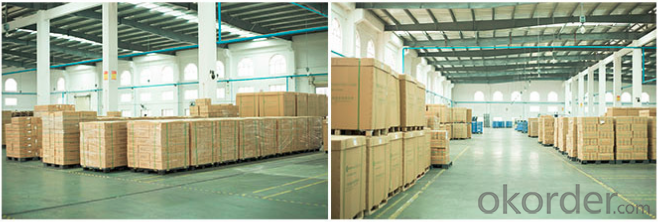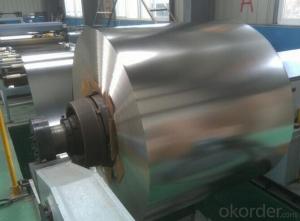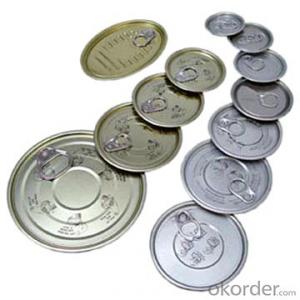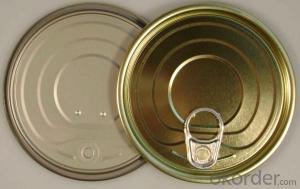Hot Sale Tomato Paste Canned Lid, EOE, Tinplate Material, 300#
- Loading Port:
- Guangzhou
- Payment Terms:
- TT OR LC
- Min Order Qty:
- 950000 pc
- Supply Capability:
- 100000000 pc/month
OKorder Service Pledge
OKorder Financial Service
You Might Also Like
Brief Details
Metal Type: Tinplate
Type: Easy Open End, Can lid
Feature: Non Spill, Full open
Custom Order: Accept
Model Number: 300#
Name: 73mm easy open end
Size(mm): 72.9
Inner coating: White porcelain
Shape: Round
Specifications
Name | canned food |
Item No. | 300# |
Shape/type | Round |
Size(mm) | Dia 72.9 |
Coating | White porcelain |
Material | Tinplate |
Pcs/20 GP’ | 1,680,000 Customize packing: as clients’ requests. |
Features | 1.Used for packaging of tomato paste,jam,salad…etc. 2.Have illustration printing on the lid. 3.Coating can be according to the customer required. |
Our packing
We could offer package as customers require, by carton or by wooden pallet.

Our Workshop


FAQ
1.Q: What is the material of EOE?
We can offer both tinplate and aluminum material made EOE;
2.Q:Could you offer samples for our testing?
YES, we could offer sampler for free if needed;
3. Q:Can you make new mold with customized size I need?
YES, We can make mold for you if reach some qty.
- Q: Can tinplate be painted or coated with other materials?
- Yes, tinplate can be painted or coated with other materials.
- Q: How does tinplate contribute to the overall portability of packaging?
- Tinplate contributes to the overall portability of packaging by being lightweight and durable, making it easy to transport and handle. It also provides excellent protection against external elements such as moisture, light, and air, ensuring the contents remain intact during transit. Additionally, tinplate's compact and stackable nature allows for efficient storage and maximizes space utilization, further enhancing portability.
- Q: How does tinplate contribute to the protection of textile products?
- Tinplate contributes to the protection of textile products by providing a durable and corrosion-resistant packaging material. It acts as a barrier against moisture, oxygen, and other environmental factors that could damage the textiles. Additionally, tinplate containers can be sealed tightly, ensuring that the textile products remain intact and free from contamination during storage and transportation.
- Q: How does tinplate packaging protect against moisture and oxygen?
- Tinplate packaging protects against moisture and oxygen due to its unique properties. The tin coating on the steel prevents direct contact between the packaged item and the surrounding air, creating a barrier that inhibits the penetration of moisture and oxygen. This helps to preserve the quality, freshness, and shelf life of the contents inside, making tinplate packaging an effective solution for moisture and oxygen-sensitive products.
- Q: Can tinplate be used for stationery and office supplies?
- Yes, tinplate can be used for stationery and office supplies. Tinplate is a lightweight and durable material that can be easily molded into various shapes and sizes. It is commonly used for making pen holders, pencil cases, storage boxes, and other stationery items. Additionally, tinplate provides a smooth and glossy surface, making it ideal for printing logos or designs on office supplies.
- Q: What are the advantages of using tinplate for electrical enclosures?
- There are several advantages of using tinplate for electrical enclosures. Firstly, tinplate offers excellent corrosion resistance, ensuring the durability and longevity of the enclosure even in harsh environments. Secondly, tinplate has high strength and rigidity, providing robust protection for the electrical components inside. Additionally, tinplate is a cost-effective option compared to other materials, making it a popular choice for mass production. Lastly, its malleability allows for complex shapes and designs, providing flexibility in enclosure manufacturing.
- Q: What are the common challenges in recycling tinplate packaging?
- Some common challenges in recycling tinplate packaging include contamination from other materials, such as paper or plastic, which can make the recycling process more difficult and less efficient. Additionally, tinplate packaging often contains a plastic lining or coating, which must be removed before recycling the tinplate itself. Another challenge is that tinplate packaging is often small and lightweight, making it more prone to being lost or mixed in with other waste streams. Finally, there may be limited infrastructure or collection systems in place to effectively collect and recycle tinplate packaging.
- Q: How does the printing process affect the durability of tinplate?
- The printing process can significantly affect the durability of tinplate. The printing ink used can provide a protective layer that helps prevent corrosion and enhance the tinplate's resistance to external factors such as moisture and abrasion. Additionally, the printing process can also impact the adhesion of the coating on the tinplate, which can further improve its durability.
- Q: Can tinplate be used for packaging fragile items?
- Yes, tinplate can be used for packaging fragile items. Tinplate is a strong and durable material that provides excellent protection against damage. Its resistance to impact and ability to withstand pressure make it suitable for packaging fragile items safely. Additionally, tinplate's ability to resist corrosion ensures that the packaging remains intact and protects the fragile items throughout the shipping or storage process.
- Q: What are the benefits of using tinplate for coins?
- There are several benefits of using tinplate for coins. Firstly, tinplate is a durable material that can withstand wear and tear, making it ideal for coins that are constantly being handled and circulated. Additionally, tinplate is rust-resistant, ensuring that the coins maintain their appearance and quality even in humid or wet conditions. Another advantage is that tinplate is relatively inexpensive compared to other materials, making it a cost-effective choice for producing coins in large quantities. Lastly, tinplate is highly recyclable, which aligns with the growing emphasis on sustainability and environmental consciousness in coin production.
Send your message to us
Hot Sale Tomato Paste Canned Lid, EOE, Tinplate Material, 300#
- Loading Port:
- Guangzhou
- Payment Terms:
- TT OR LC
- Min Order Qty:
- 950000 pc
- Supply Capability:
- 100000000 pc/month
OKorder Service Pledge
OKorder Financial Service
Similar products
Hot products
Hot Searches
Related keywords


























